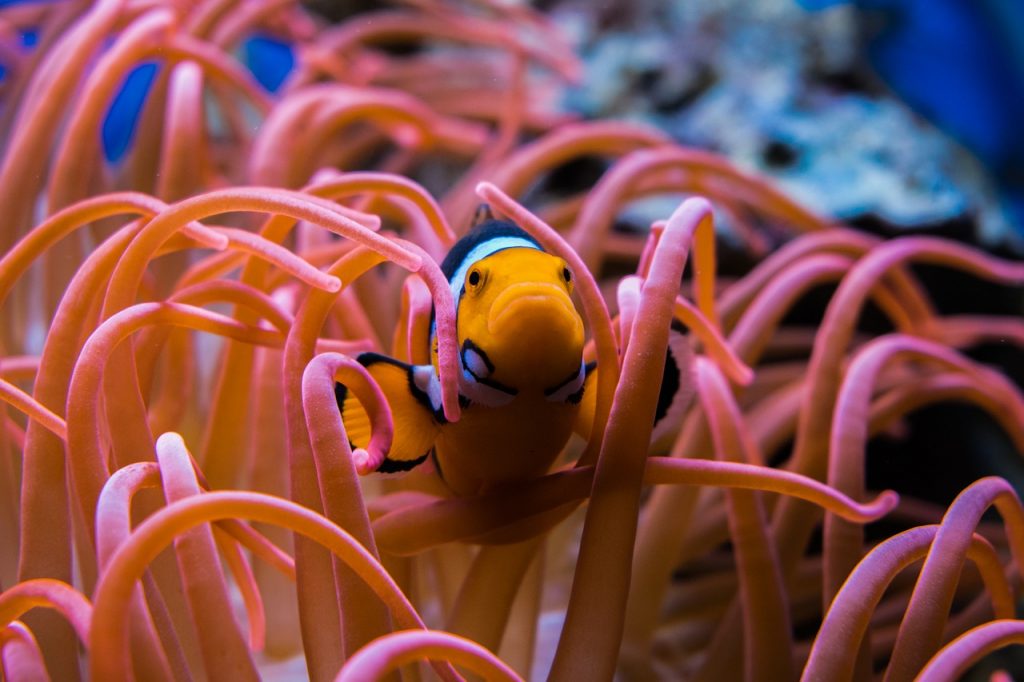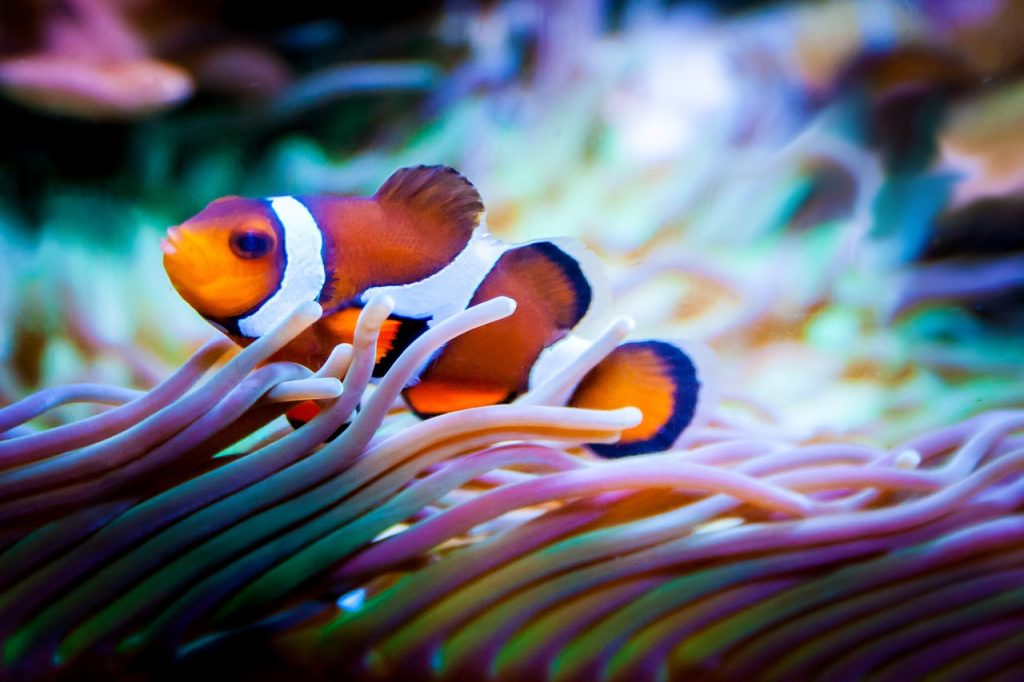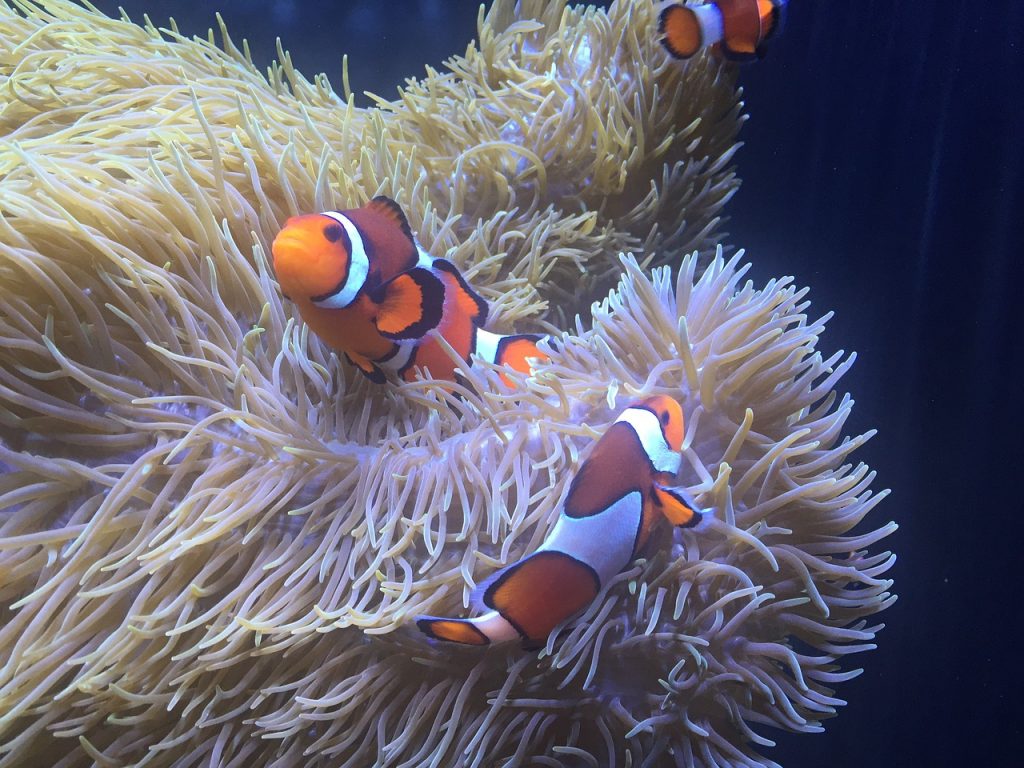All clownfish start off as male, but can switch to female when circumstances allow, for example, when the only female present dies or disappears. In a new study, researchers found that the male-to-female sex-change occurs first in the fish’s brain and only later involves the gonads – sometimes after a delay of months or even years.
“We discovered that when you pair two males together, they fight, and the winner becomes female,” said University of Illinois psychology professor Justin Rhodes, a behavioral neuroscientist who led the research. “But the first thing that changes is the brain, in particular the part of the brain that controls the gonads.”
In clownfish, females are dominant. They pair up with a single male, the largest of the males available, to mate for life. Each mating pair makes its home in an anemone, “which is kind of like an upside-down jellyfish,” Rhodes said. The anemone protects them from predators with its stinging tentacles. Clownfish appear to be immune to the anemone’s stings. The females lay eggs and the males fertilize them. After that, the mother defends the nest, protecting it from predators, and the father tends to the eggs.
 Image: Robert Fridzema /PixabayImage: Robert Fridzema /Pixabay
Image: Robert Fridzema /PixabayImage: Robert Fridzema /Pixabay
Sometimes, other nonreproductive male fish are allowed to also live on the same anemone with the mating pair. If, for some reason, the female disappears, her male mate begins – almost immediately – to take on female behaviours, such as aggressively defending the nest. And the next largest male moves in to become her mate.
Rhodes and his colleagues wanted to know whether the transition from male to reproductively viable female began first in the brain or gonads. They set up experiments in the laboratory where they paired male clownfish together and tracked their development. In all, they followed 17 pairs of male clownfish.
Within minutes or hours of being put together in a tank, one of the two males emerged as dominant, and began to behave as a female would, the researchers reported.
“We thought that once the fish figured out it was dominant, then immediately its gonads would start changing,” Rhodes said. “In fact, that’s not what happened. The gonads stayed male while the brain was changing.”

The researchers focused on a brain structure that regulates gonad function. This structure, the preoptic area, is much bigger in females than in males, with roughly twice the number of neurons.
“We tracked changes in the preoptic area, changes in the gonads and in the blood hormones,” Rhodes said. “We counted neurons in the preoptic area, took blood samples to look at the sex hormones, and examined the eggs to look at the proportion of eggs to testicular tissue in the gonads.”
Within six months of being paired with another male, the dominant fish had grown its preoptic area to a size that made it indistinguishable from the same region in other female clownfish brains.
“After six months, this part of the brain is completely changed from a male brain to a female brain,” Rhodes said. “But the gonads have not yet changed, which means that they’re still male gonads.”
Any biologist who studies clownfish would identify the fish at this stage as female, Rhodes said. “Also, if you ask other fish, they’ll tell you it’s a female.”
Male clownfish will not fight with a female, but females will fight each other to the death. This is exactly how the other fish responded to the dominant fish.
“It’s a very clear demonstration that brain sex and gonadal sex can be uncoupled,” Rhodes said. “Is it female or is it male? It’s got a female brain, but its gonads are male.”
Despite the researchers’ expectations, the dominant fish appeared to be in no hurry to change their gonads to the fully female variety. Only three of the dominant fish in the 17 pairs actually transitioned all the way to reproductive females, with viable eggs in their gonads. One of the three laid eggs.
The rest of the pairs seemed to be in a holding pattern, with female brains and male gonads. The researchers followed them for three years, and the fish still hadn’t made the full transition.
“We don’t know exactly what they’re waiting for,” Rhodes said. “Maybe they’re waiting to grow bigger, so they can produce more eggs. Maybe they don’t have the right chemistry as a couple.”
Further Reading
Logan D.Dodd et al. 2019. Active feminization of the preoptic area occurs independently of the gonads in Amphiprion ocellaris Hormones and Behavior Volume 112, June 2019, Pages 65-76.
Image credits:
- Clownfish in anemone: Nicole/Pixabay
- Clownfish: Robert Fridzema /Pixabay
- Clownfish, Amphiprion ocellaris: Julio Camelo/Pixabay

